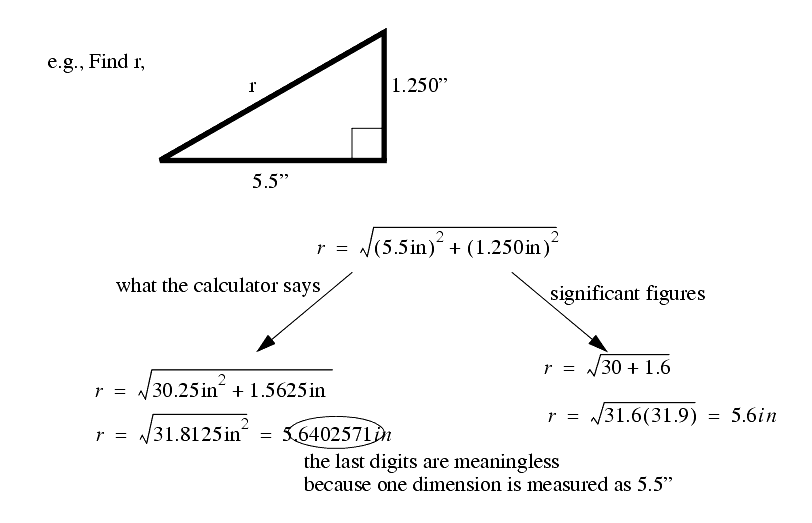2.4 CALCULATIONS IN ENGINEERING
������������2.4.1 Units
������������we will use both SI Units and Imperial units,
Typical SI (System International) units are,
These units can be combined to describe any numbers we have.
Note: the reader is expected to be aware of the basic rules of numbers and units.
see the section on units and watch some of the sample calculations for examples of proper application.
2.4.2 Significant Figures
������������significant figures should be considered. One example of the effect of ignoring significant figures is given,

Basic rules of calculations for engineering,
1. To count the number of significant figures, don't count zeroes at the start of the number, but do count zeroes at the end.
2. When doing calculations, the number of significant figures should be considered. All numbers and results should have the same number of significant figures, or one/two extra for more accurate numbers.
3. Generally, the final result must have at most the same number of significant figures as the least significant number.
4. Typical engineering numbers have 3 or 4 significant figures as they are determined from real systems experimentally.
5. Be aware that different operations may increase or decrease accuracy.
6. Engineers use engineering notation for numbers in exponential form, for example 0.0003 should be 0.3x10-3 not 3x10-4.